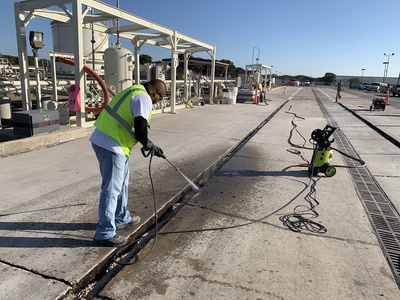
The U.S. military has used Rapid Set® calcium sulfoaluminate (CSA) cement-based products to quickly rebuild runways and other damaged infrastructure for almost two decades. This Concrete Mix project demonstrates the material’s speed and strength benefits in one of many airfield pavement repair applications.
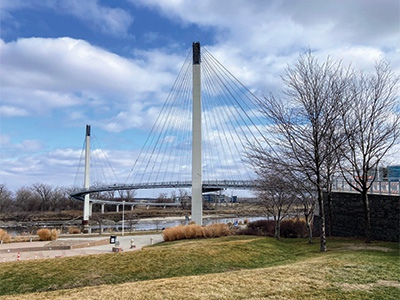
More stringent performance requirements combined with changes in type, quality, and availability of concreting materials is inspiring innovation, creativity, and collaboration. It is also renewing interest in materials with established, proven performance that offer solutions to today’s challenges. One of those experiencing an inspiring renaissance is Type K cement.
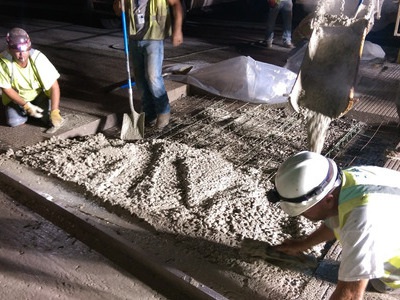
Even at 8 inches, asphalt is no match for planes that weigh 50 to 85 tons. West Virginia pavement engineers and Triton Construction replaced deteriorating overlay with 8 tons of Rapid Set® Cement concrete that, at 5000 psi compressive strength in one hour, exceeded project requirements.
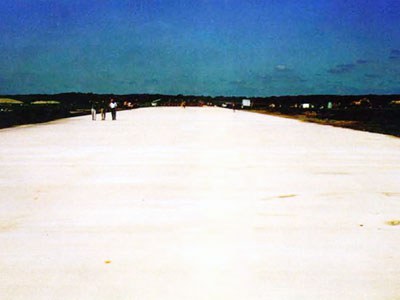
19 years after placement of three demonstration pavements, the post-tensioned design shows best performance. The post-tensioned pavement made with fibrous shrinkage compensating concrete using Type K cement is 75 feet wide, 1,200 feet long, and has no joints cut into it.
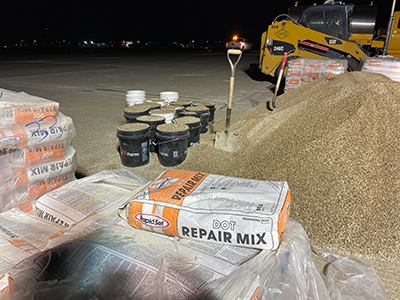
Appleton International Airport's two runways intersect instead of running parallel to each other, so pavement repairs require closing both at the same time -- not ideal for keeping traffic moving. As a result, fines for not reopening a nighttime repair are hefty. An award-winning Wisconsin contractor used Rapid Set® DOT Repair Mix to make sure overnight partial-depth surface and joint repairs were for traffic by 6 am.
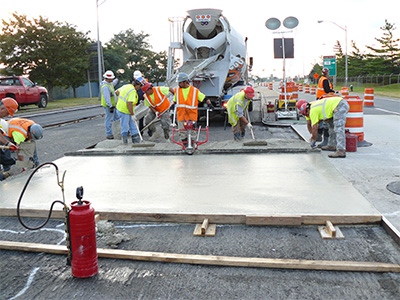
The asphalt intersections at John F. Kennedy International Airport’s cargo terminal were severely rutted by truck traffic. To repair the damaged pavement and prevent future rutting, Perfetto Contracting installed 4-inch-thick bonded whitetopping made of Rapid Set® DOT Cement concrete.
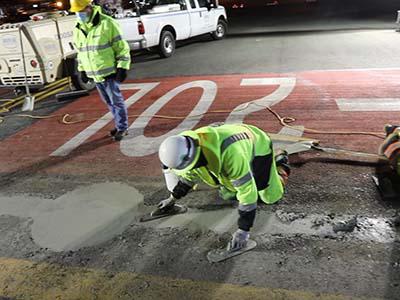
A major California airport installed can lighting to improve visibility. The contractor used ASTM C1600 very-rapid-hardening (VRH) Rapid Set Cement concrete instead of Type III portland cement concrete to avoid heavy penalties that would have accrued had taxiways not reopened to traffic by 5:30 a.m. every day.
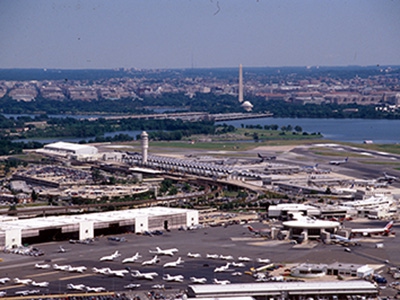
Contract penalties for construction delays on runway repairs can be extremely punitive. To give crews enough time to cut out and replace old light cans and sample and test newly placed concrete each night before the runway was approved for reopening, contractor DACO Construction used Rapid Set Cement concrete instead of accelerated Type III portland cement concrete.
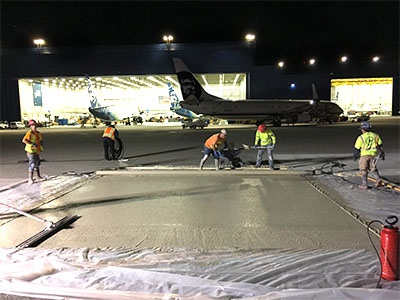
Rapid Set Cement is the Port of Seattle’s material of choice because it provides high initial strengths and a faster return to service with long-term durability. Rapid Set Cement concrete is used to perform the work overnight and the repaired sections returned to service each morning so that operations and flight schedules are not disrupted.

Project specifications for filling the trenches and holes in the upgrade of the runway lighting called for concrete to achieve compressive strength of 3,500 psi in four hours. Rapid Set Cement was used in the mix design and reached 3,500 psi in two hours, half the time specified, allowing the project to be completed sooner.
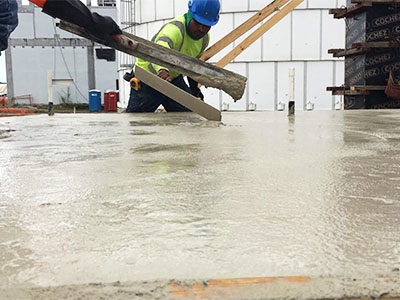
Concrete Mix was used to level the seven concrete pads inside this airport's electrical and mechanical rooms. SET Control was used to extend the working time due to the hot temperature setting time and FLOW Control was used to enhance the flow consistency.
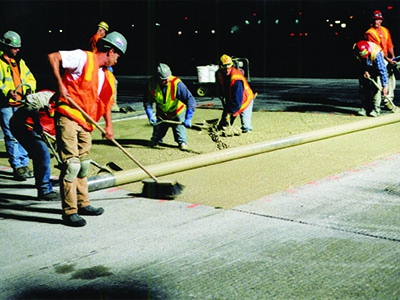
Based on the proven performance of Rapid Set® Cement Concrete in heavy-use pavement applications and harsh climates, it was chosen to replace 531 Runway 16C panels. Rapid Set Cement Concrete provided a rapid-setting, high performance concrete solution engineered to provide extended service life and significant savings in repair and replacement costs at SEA-TAC for many years to come.
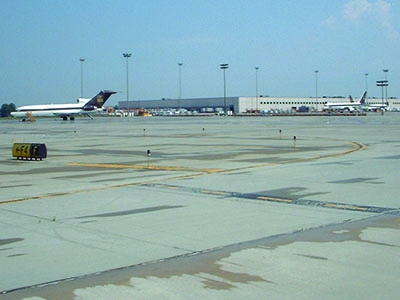
After 14 years of service, steel-fiber reinforced, post-tensioned, shrinkage-compensating concrete proves a cost-effective paving material for a joint-free airport taxiway. Product used was Type K shrinkage-compensating cement.
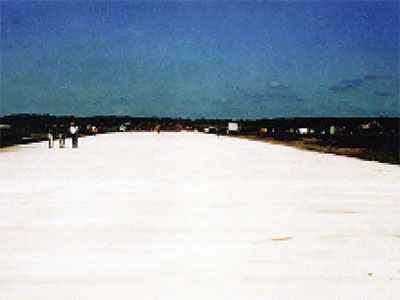
Eliminating joints in runways and taxiways has long been an objective of the Federal Aviation Administration (FAA). Joints are usually the locus of spalling, which not only causes bumpy rides but also creates a hazardous situation: Loose concrete fragments can get sucked into jet engine intakes. In its desire to overcome these challenges, the FAA installed one of the most unusual concrete slabs in the world at an Illinois airport. The post-tensioned pavement made with Type K shrinkage-compensating cement with steel fibers is 75 feet wide and 1,200 feet long -- with no joints cut into it.